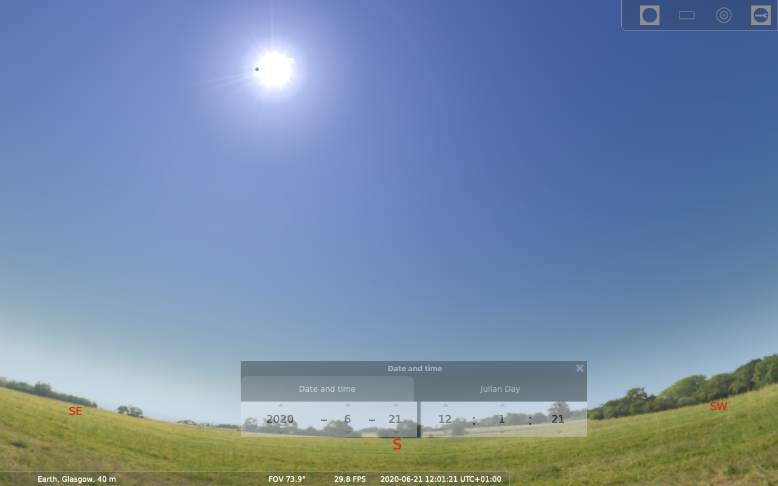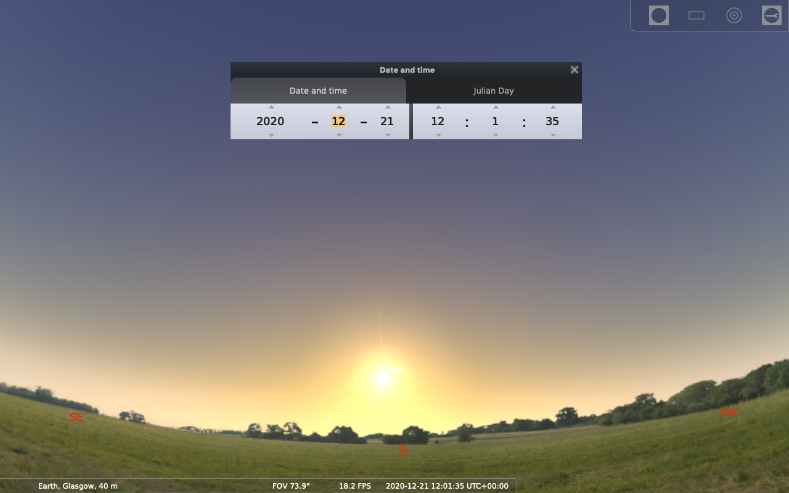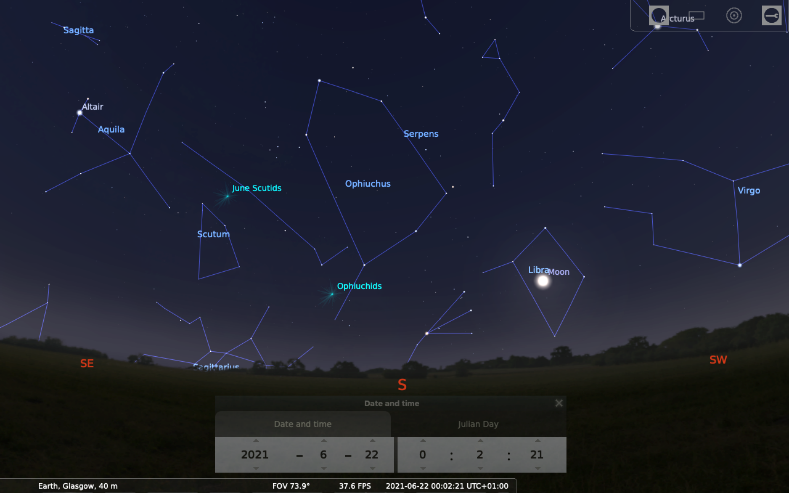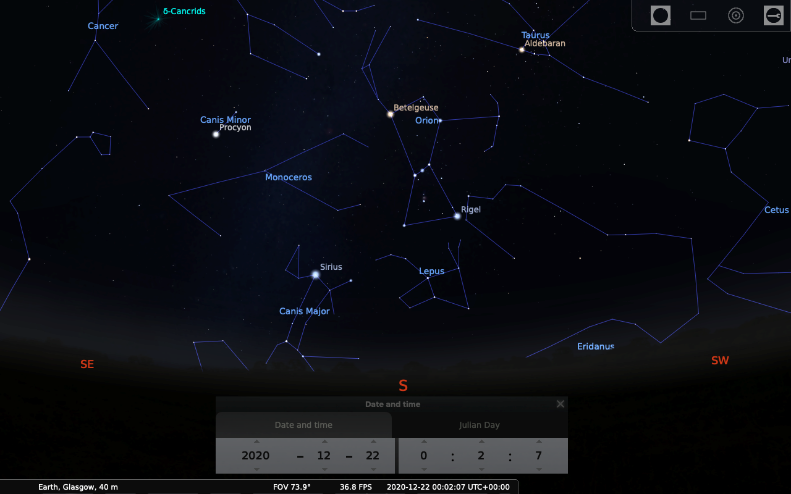As planet Earth orbits the Sun, the seasons change from summer to winter and back. This is because of the tilt of Earth’s axis. Earth spins around this axis. As we spin the Sun appears to rise and set; day changes to night. But our axis also has a tilt, it’s titled out of the plane of the solar system by 23.5 degrees. As we orbit the Sun our planet is either tilted towards or away from our star, and the seasons change as a result.
Let’s start with a look at the plane of the solar system. Our solar system is quite flat; all the planets sit roughly in line with each other on a plane – imagine shrinking the solar system down to the size of a frisbee. All the planets sit roughly on the frisbee with the Sun in the middle, rather than say Mars being above the frisbee and Jupiter below it. We call this plane the ecliptic.
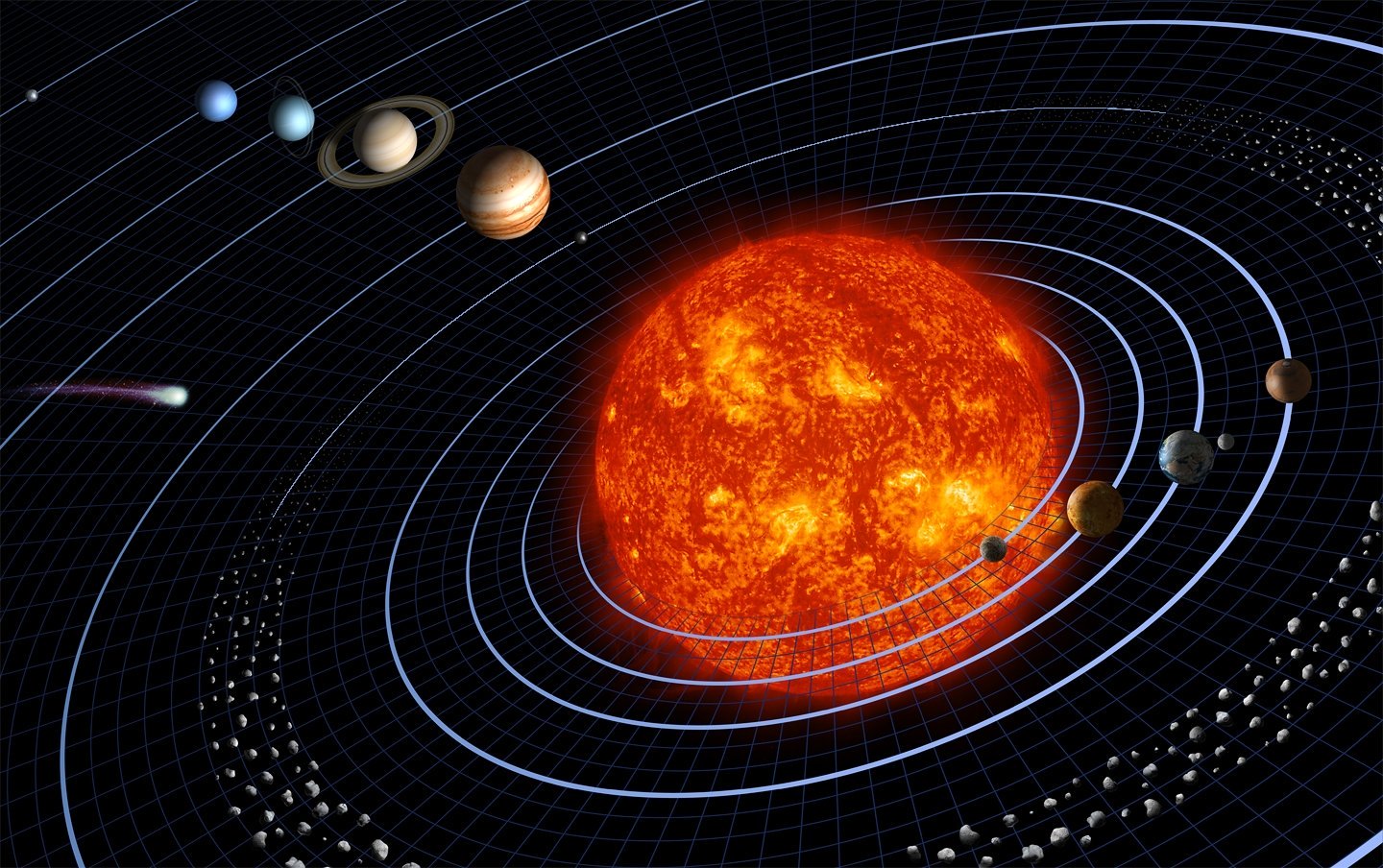
Now think about how Earth’s axis effects our view of the solar system. Our axis is tilted 23.5 degrees out of Earth’s orbit in the ecliptic. This means that during summertime the northern half of the planet (hemisphere) is tilted towards the Sun. In the wintertime we’re tilted away from the Sun.
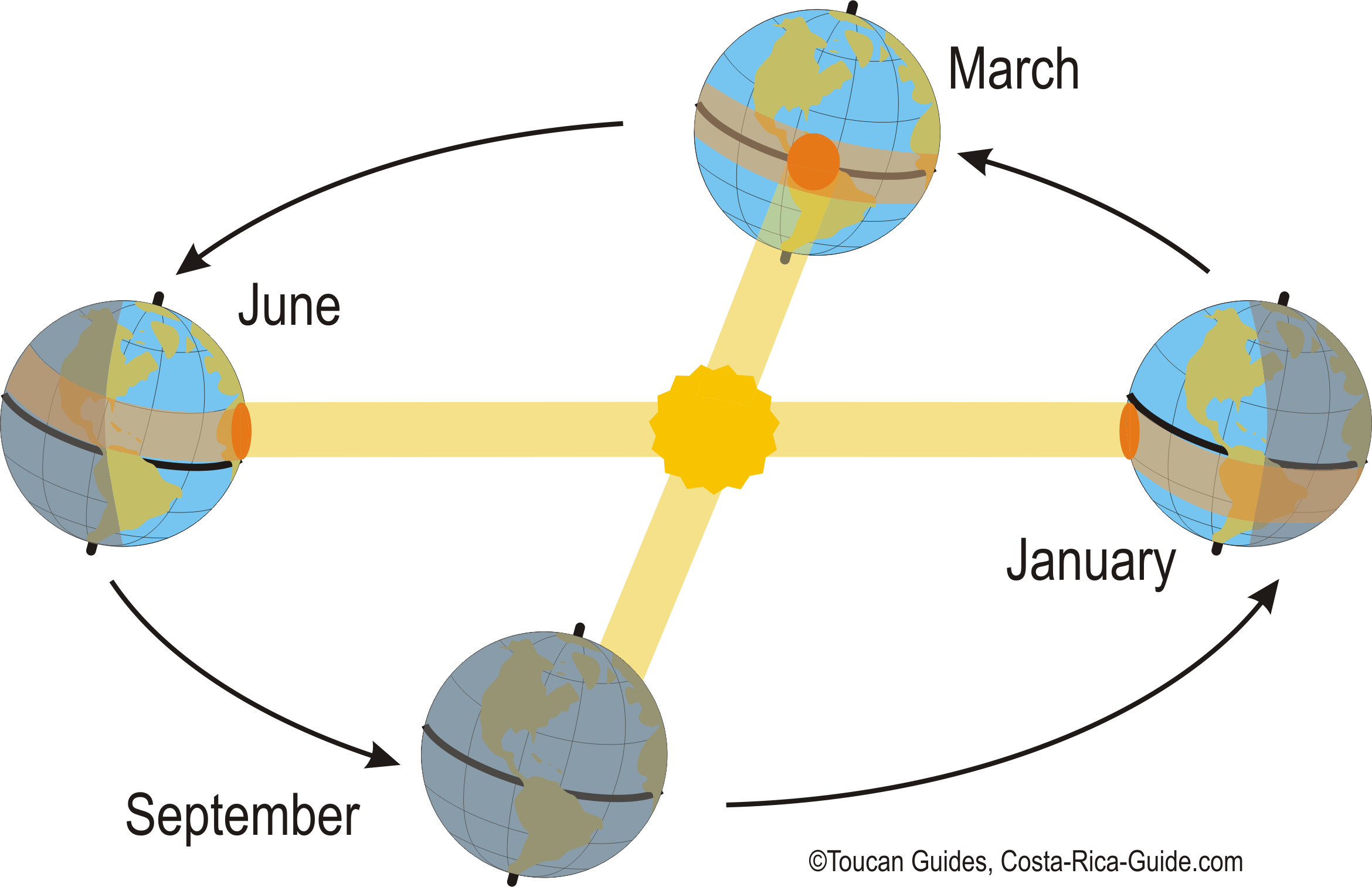
This means that in Northern summertime we’re tilted towards the Sun, resulting in longer hours of daylight and shorter hours of darkness. The Sun rises earlier and sets later. In fact, if you cross the Arctic circle on the summer solstice the Sun never sets! Ever heard of the midnight Sun? That is literally when the Sun is still up at midnight. The opposite is true for Northern winter. Remember; South of the equator it’s winter in June and summer in December.
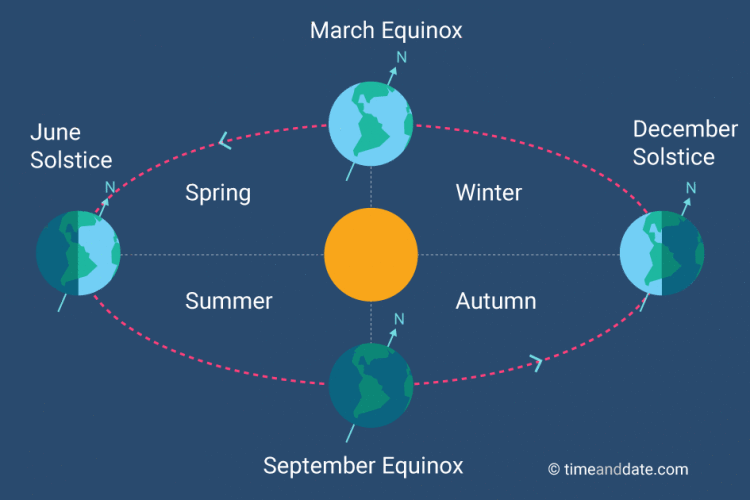
See above how the seasons in the northern hemisphere are opposite the seasons in the south. Also note that in midsummer the entire Arctic circle is in full daylight. The June/summer solstice is the longest day of the year, whilst the December/winter solstice is the shortest day. The equinoxes (both spring and autumn) are when day and night are both of equal length.
There’s another important result from this tilt towards/away from the Sun. Not only do we receive different hours of sunlight during different seasons, we also receive different intensities of daylight. When the Sun is lower in the sky, the light is coming towards us at a lower angle and so the same amount of energy gets spread out over a wider area. When the Sun is higher, the same amount of energy is focused over a smaller area and so the ground is heated more in the summer.
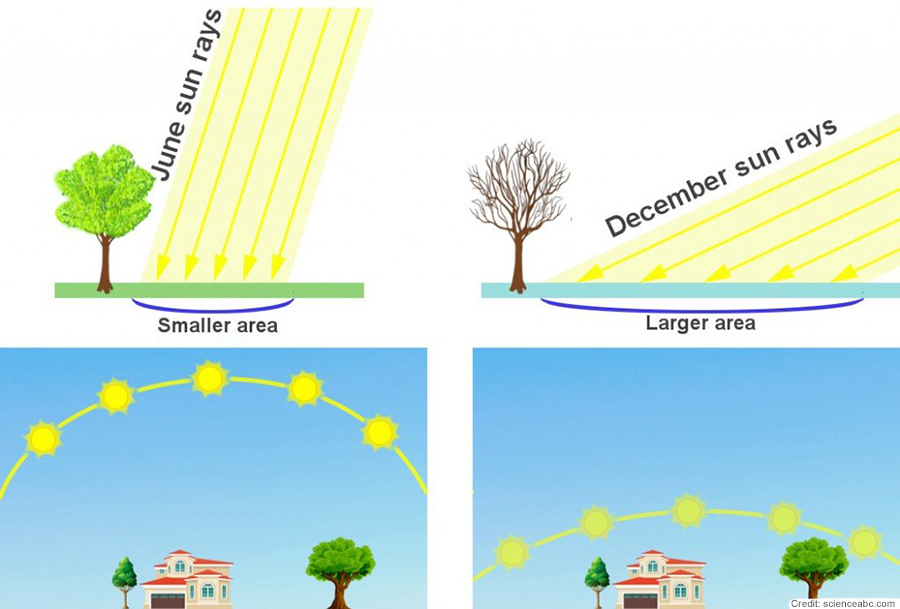
The overall result is a warmer environment in the summer when we receive more concentrated sunlight for a longer duration, and a colder environment in the winter when we receive less concentrated sunlight for a shorter duration. The closer to the Arctic or Antarctic circles you travel, the more exaggerated this effect becomes. Plants and animals have evolved to cope with and even benefit from these changes. For example deciduous trees lose their leaves in the winter to cope with the reduced solar energy, whereas coniferous trees have frost tolerant needles and are able to cope with the cold winters up north. Different organisms all over the planet (including humans) show different behaviours and features during different seasons.
We also see different stars and constellations as we orbit the Sun. The night sky appears to wrap around the Earth in a big sphere (because Earth is a sphere). We call this the celestial sphere. As we orbit the Sun, the night side of the planet faces a different part of the celestial sphere. The stars rise in the east a little bit earlier every night.
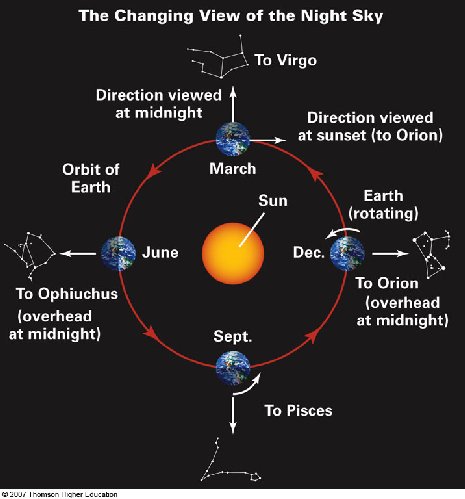
In the picture above we can see that Earth faces Orion at night in December, but in June Orion is up with the Sun in the daytime. You can simlate this yourself at home by visiting www.stellarium.org and downloading the planetarium software on your computer for free. Open the software and change the date, watch as the position of the Sun and other stars changes throughout the seasons. You can also change your location on Earth to begin visualising everything we’ve discussed in this lesson.
Below are four different landscapes from Stellarium. Two show the position of the sun in the sky at opposite times of year. Two show the view of the night sky at opposite times of year.
